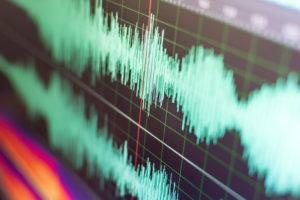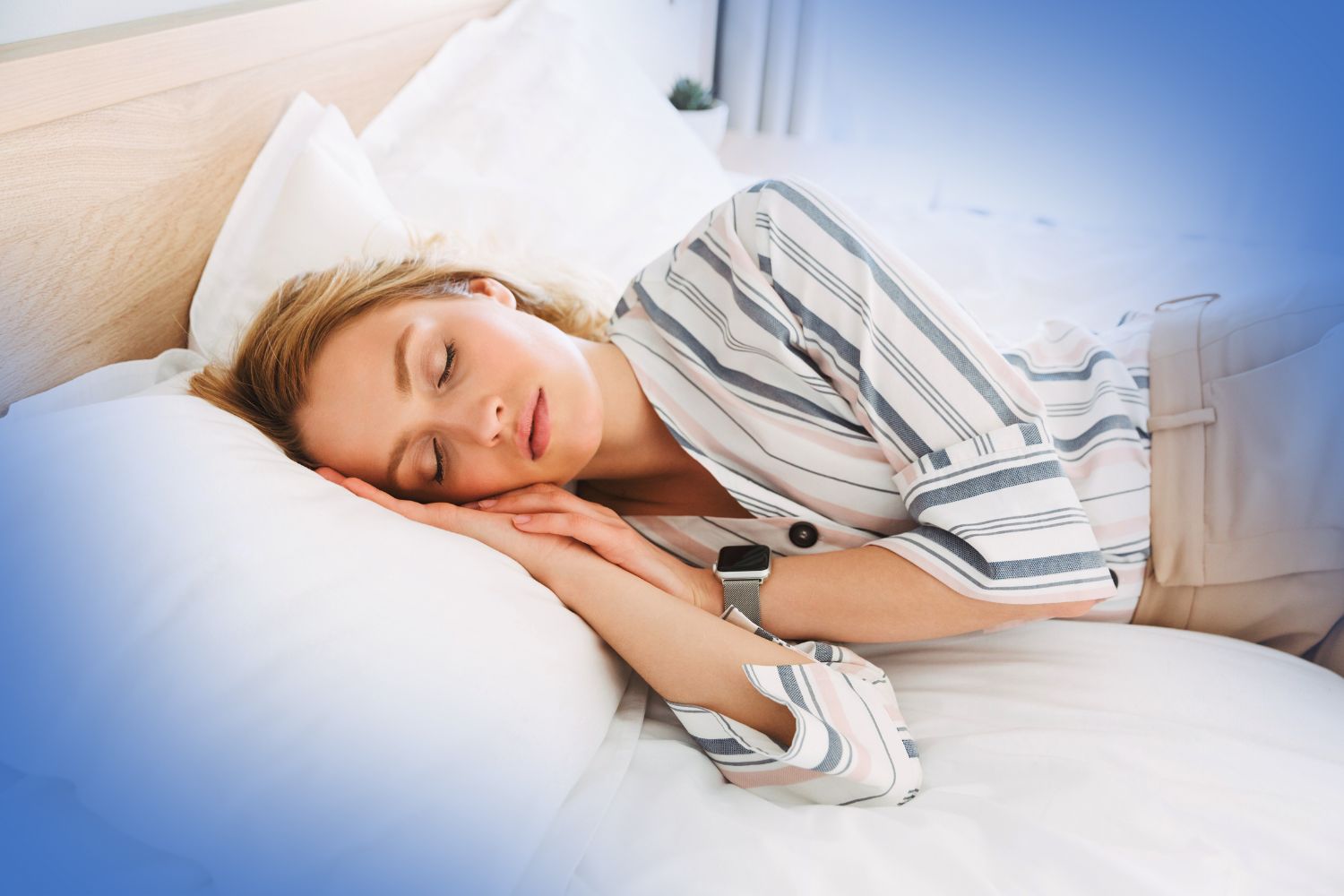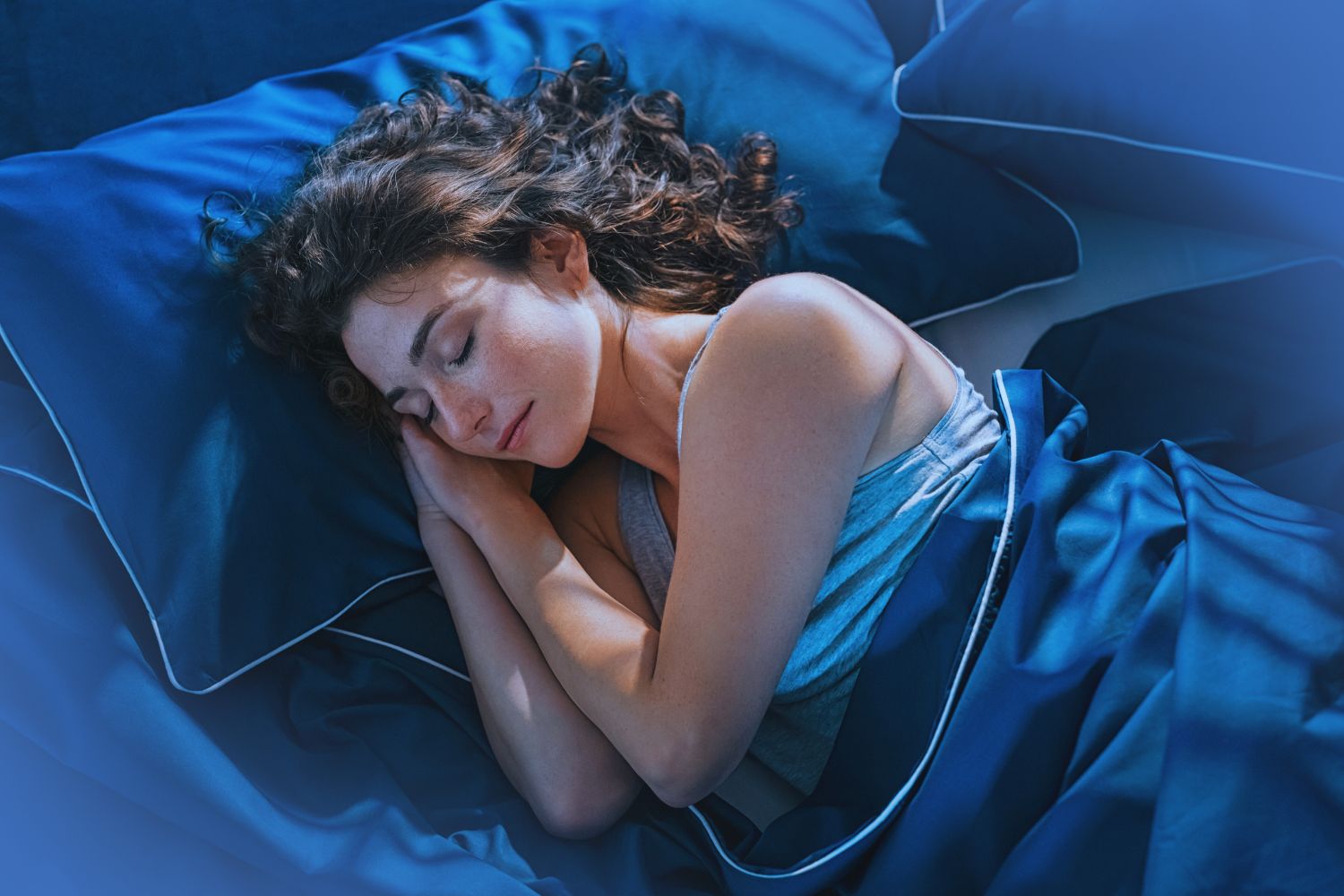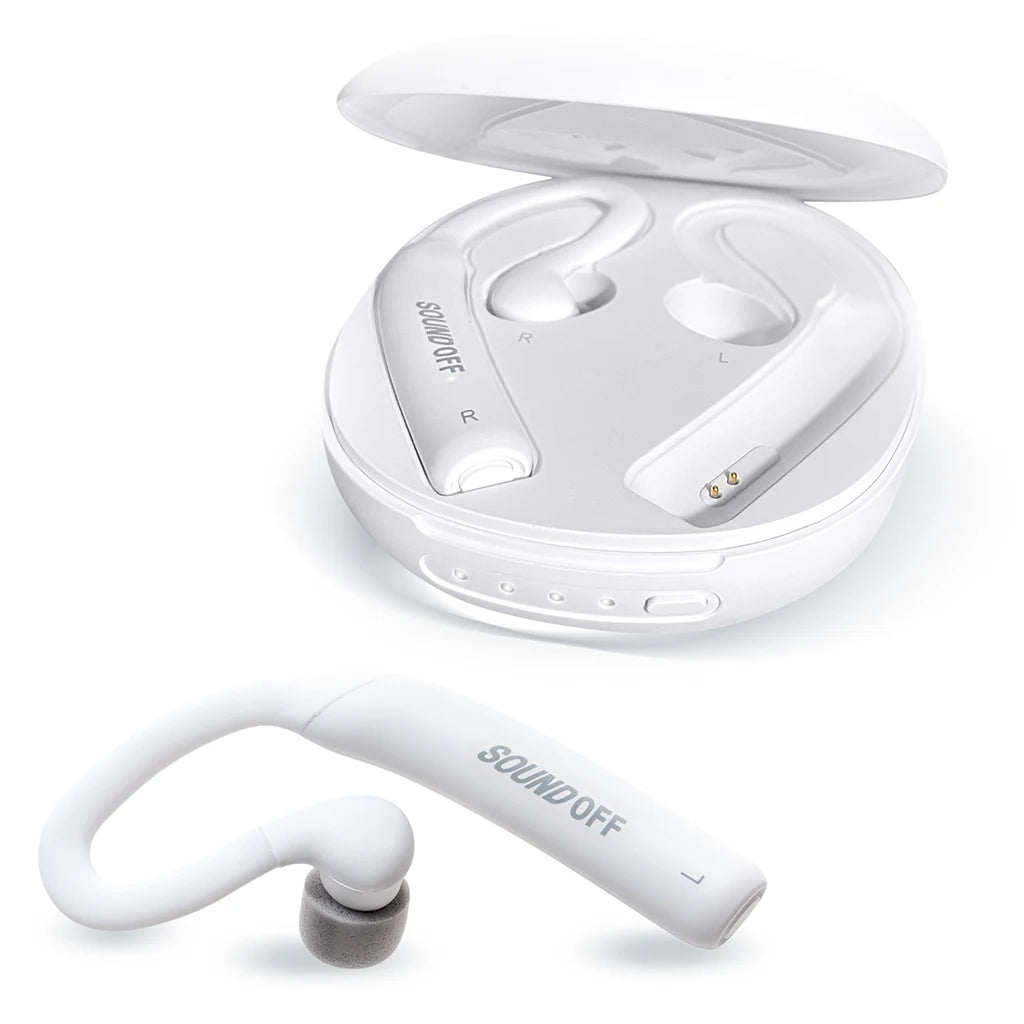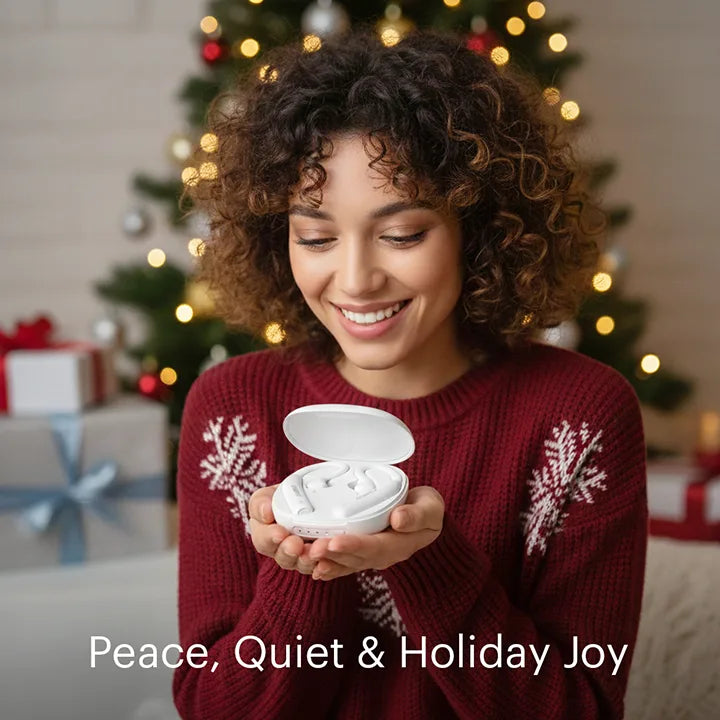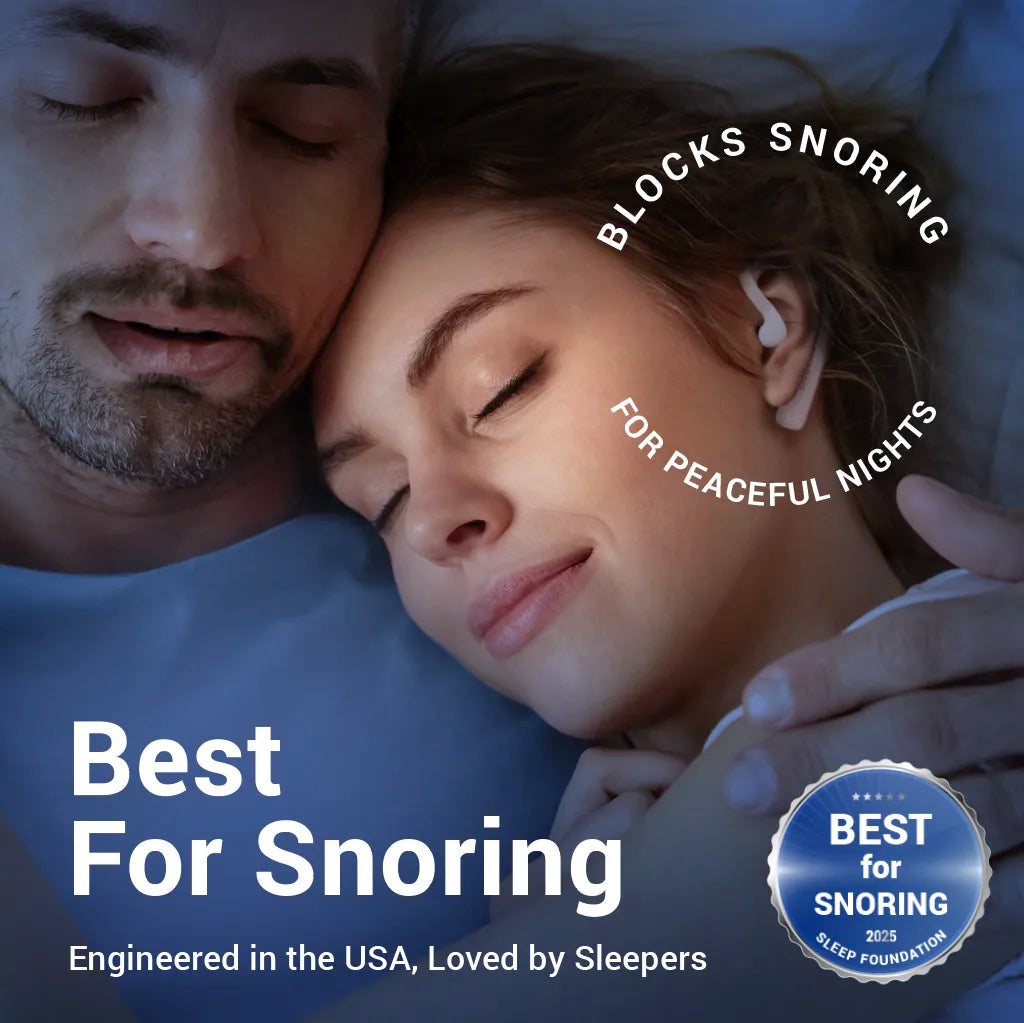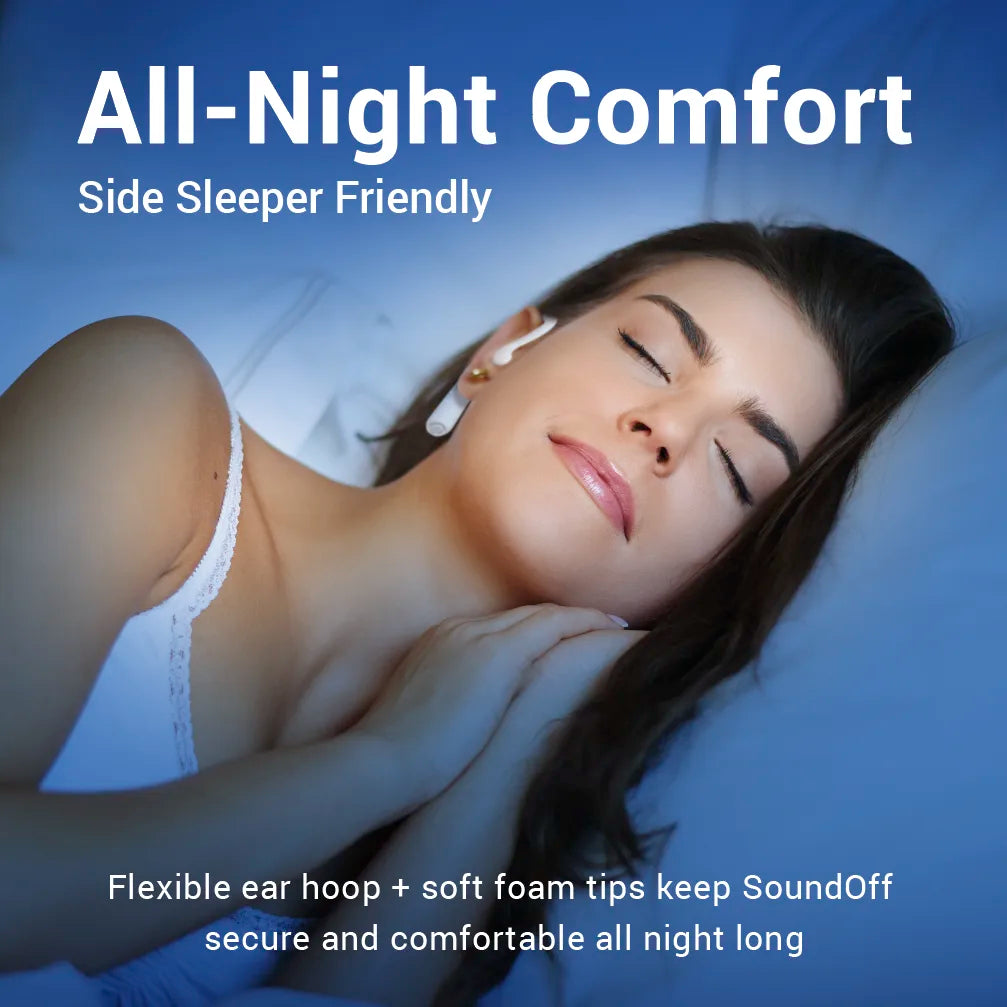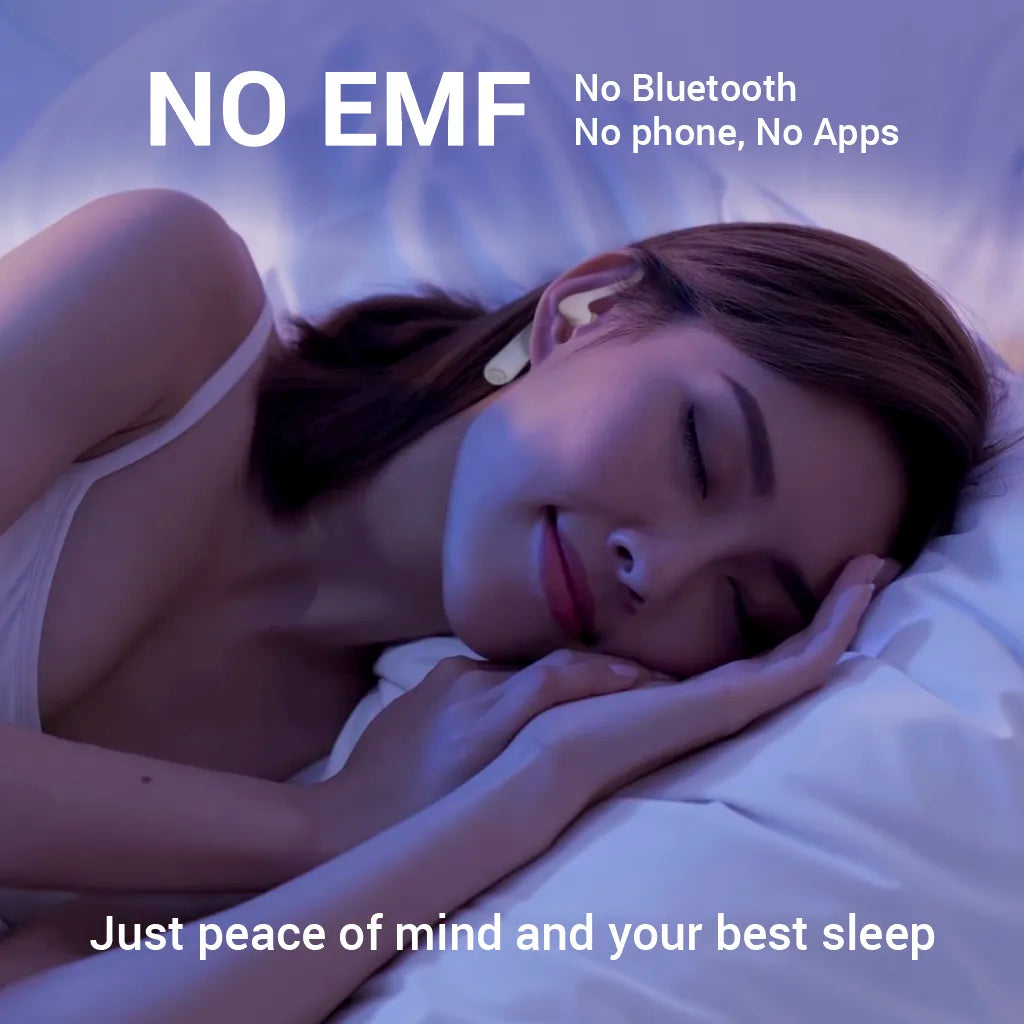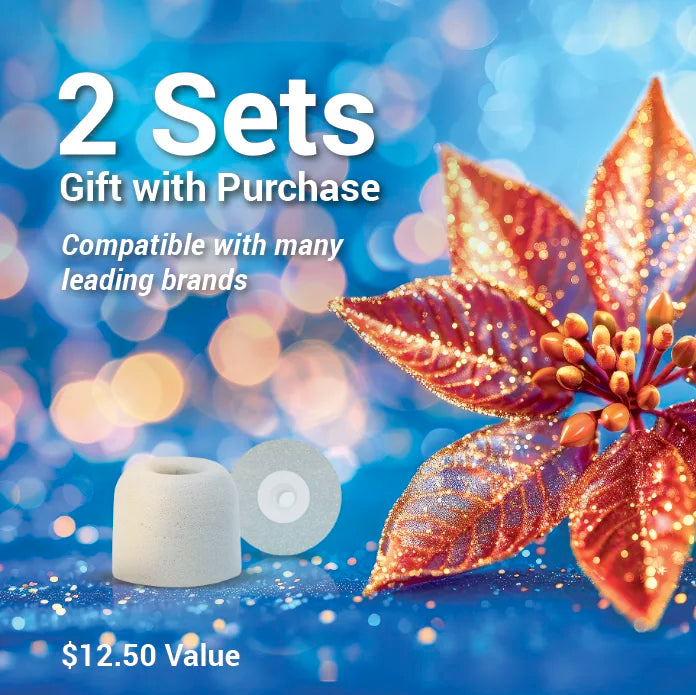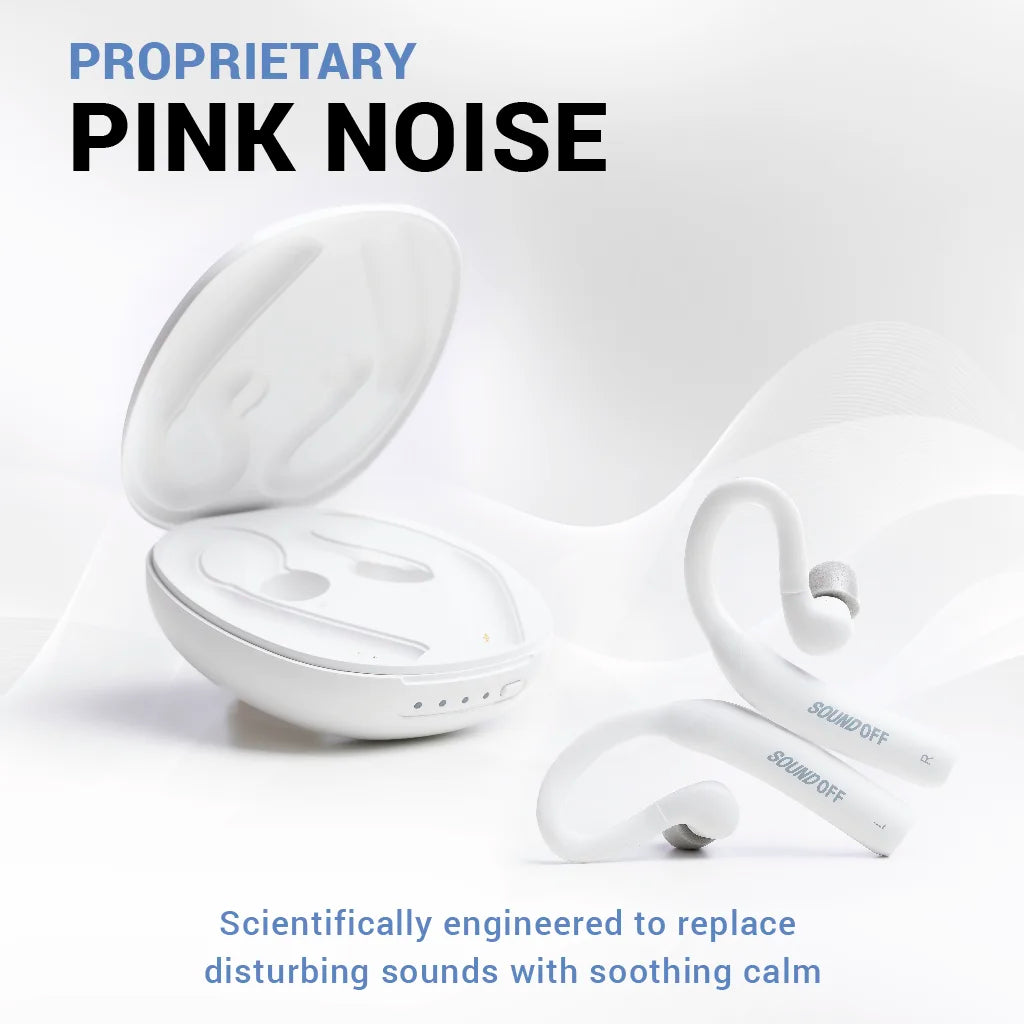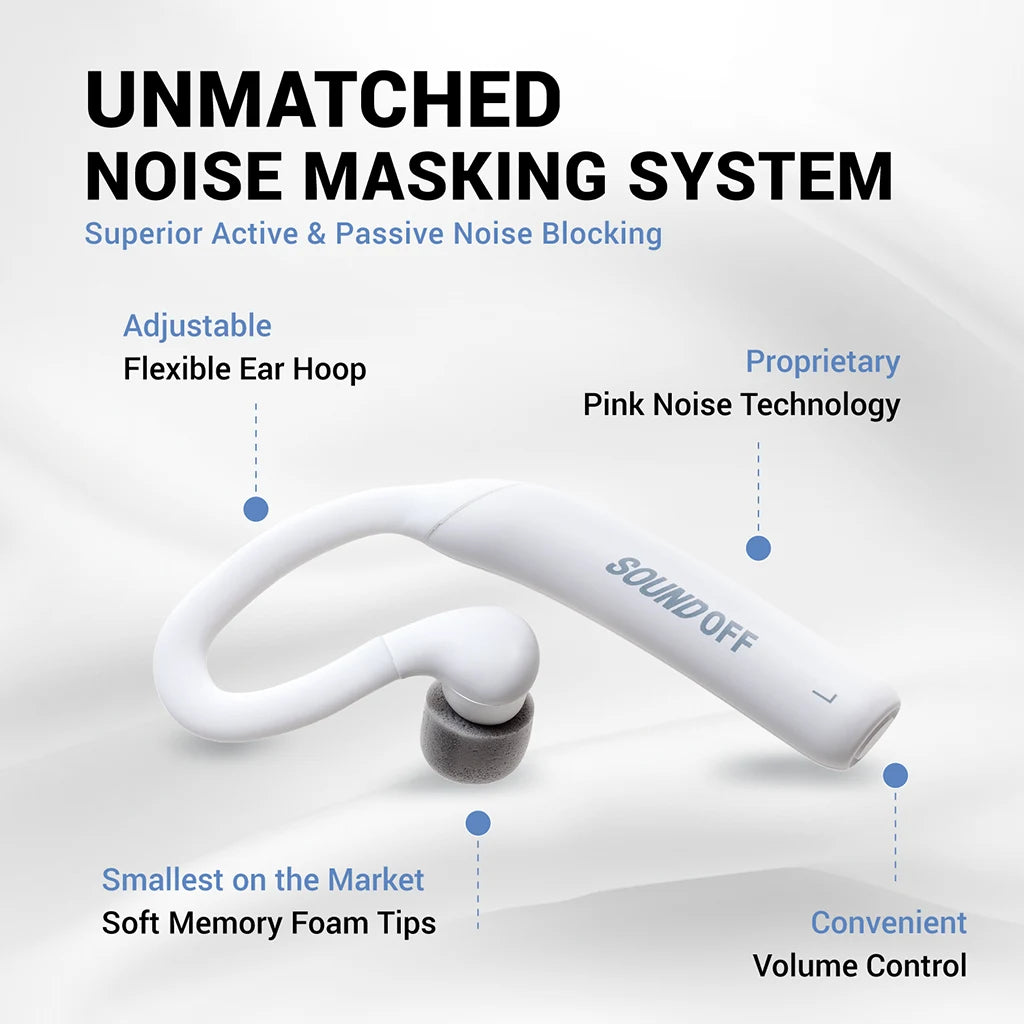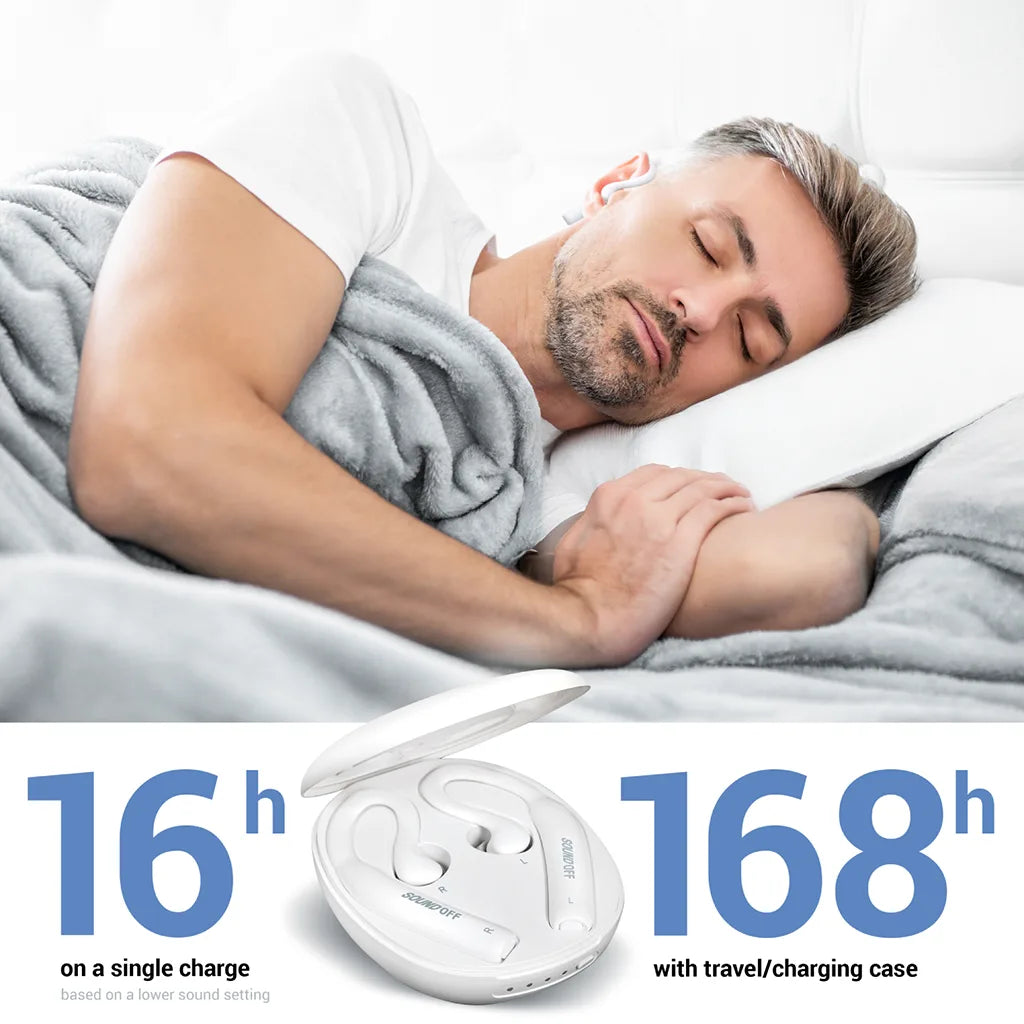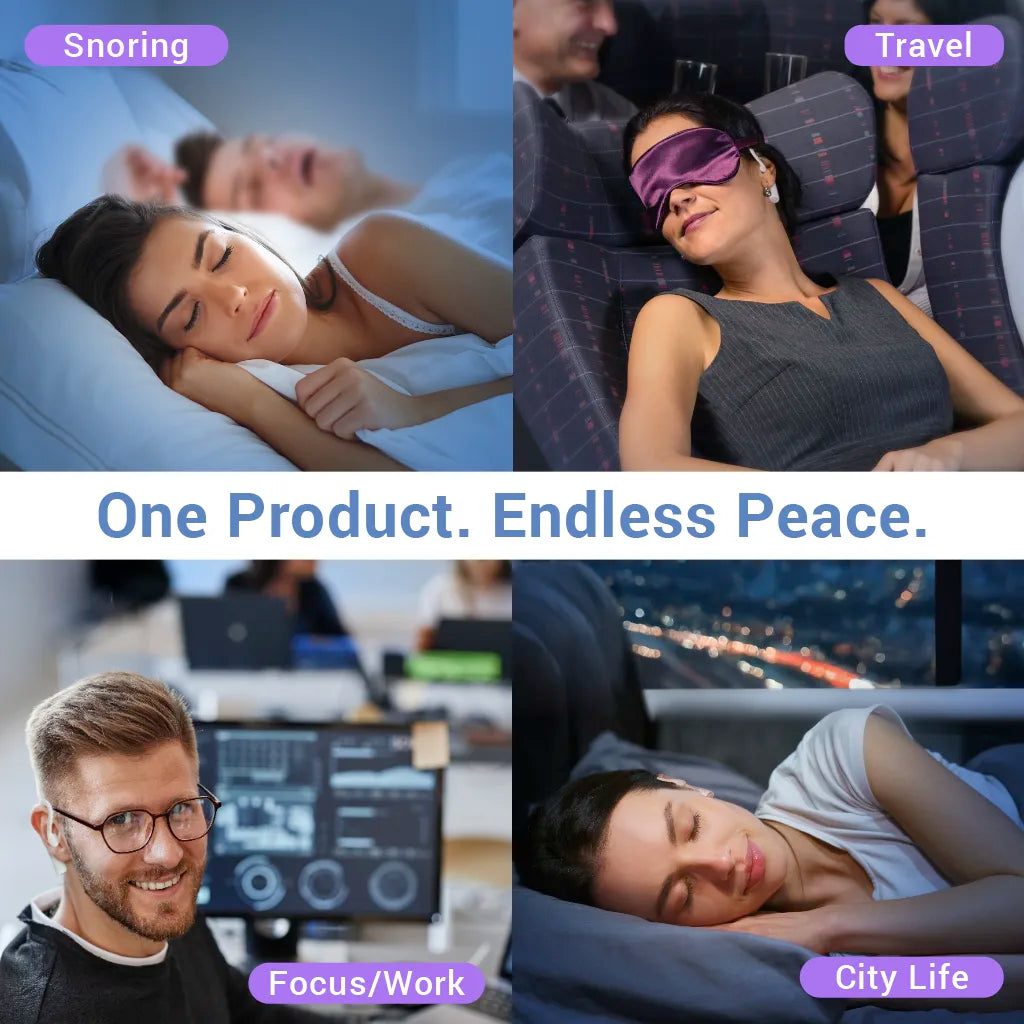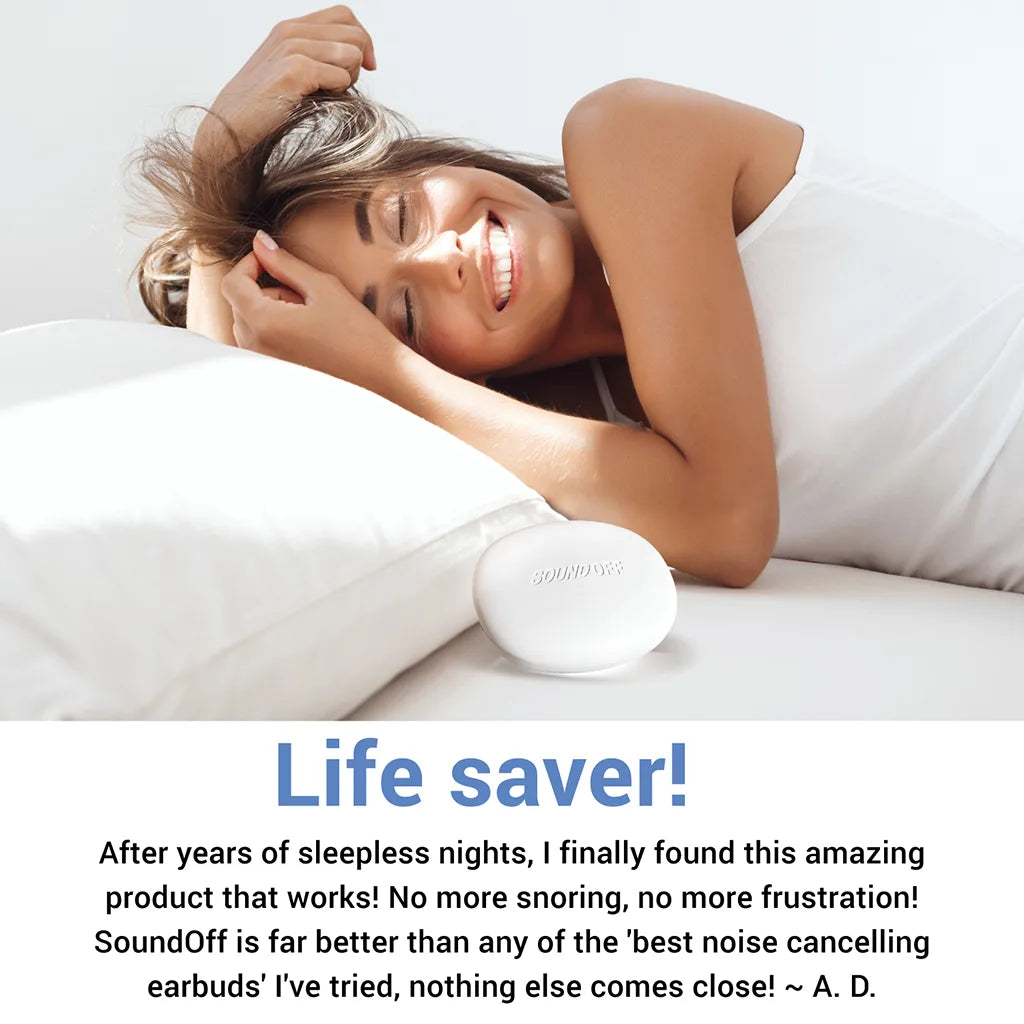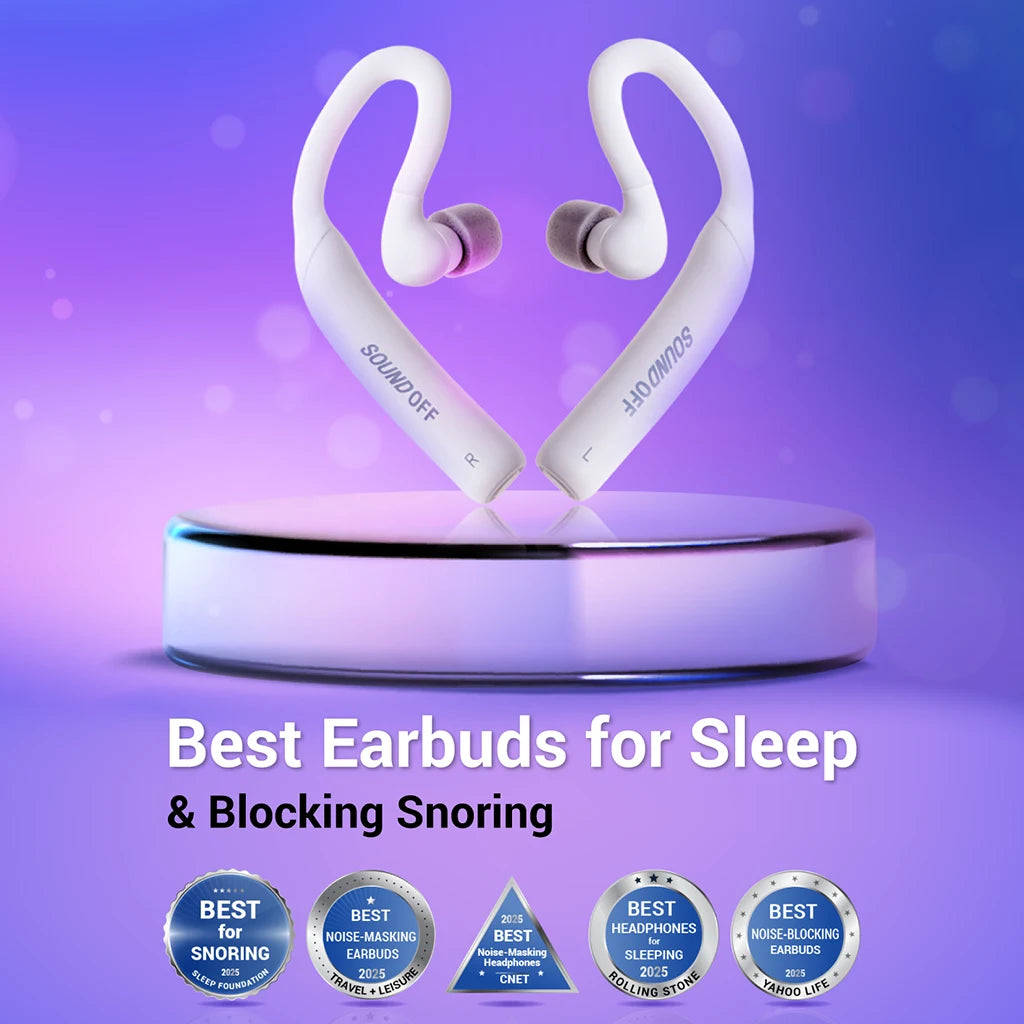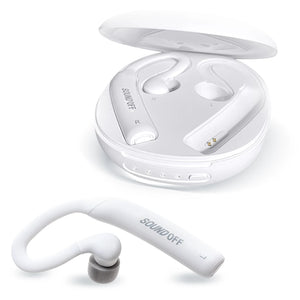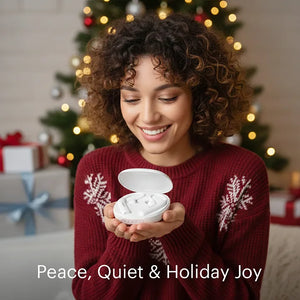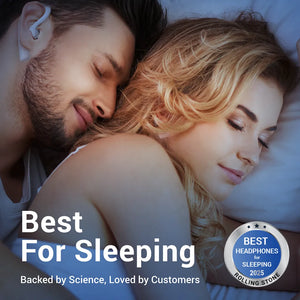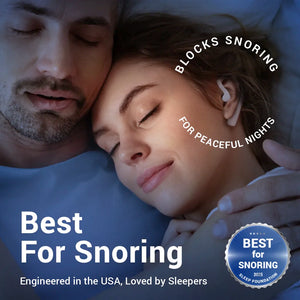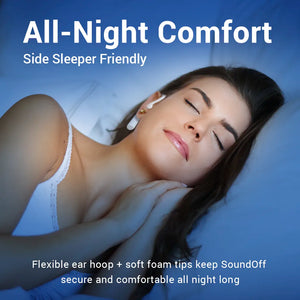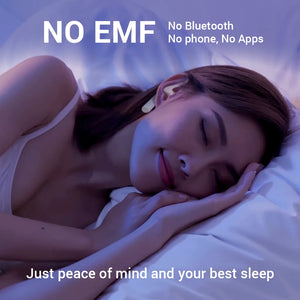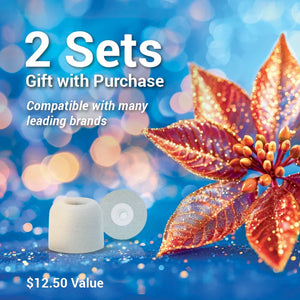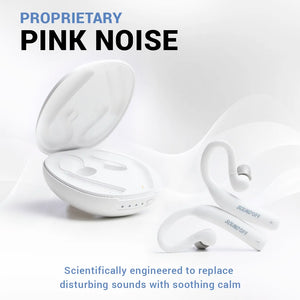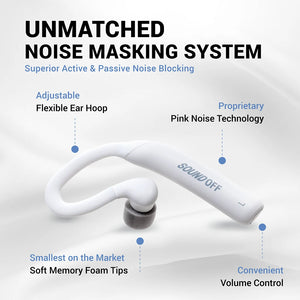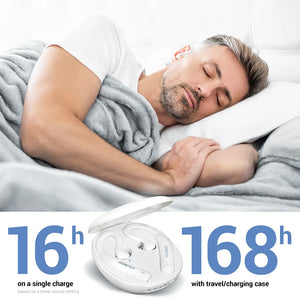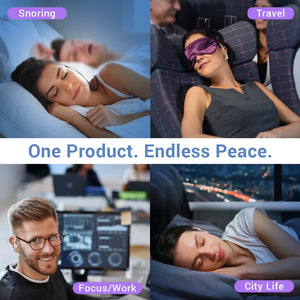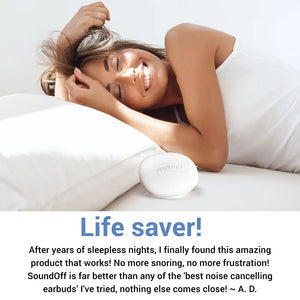
Introduction:
For a good night’s sleep, there is nothing like a nice, quiet, dark, relaxing room where you can get comfortable while you slip away into that fantastic world of dreams and fantasies.
But it doesn’t always go down like this, does it? It’s not a perfect world. And it’s not always a quiet one.
There are traffic sounds, cars, buses, trains and airplanes whizzing by. There are train whistles and boat horns, racing engines and squealing brakes.
There might be small children crying, winds howling, beds creaking, birds chirping, dogs barking or any number of other sounds competing with your brain’s attempt to shut them out.
Wouldn’t it be great if you could have a pair of earphones to help manage the sound disturbances that are robbing you of that good night’s sleep – and your health?
Much research has been done over the years to study sound and its effects on the body, especially regarding sleep. Noise masking and noise cancelling devices have been designed to help manage sound and help the brain with the task of moving you into a comfortable state of sub-consciousness each night.
Noise Cancelling Devices
Noise cancelling devices help manage sound disturbance in several different ways, from creating a physical barrier, to manipulating sound waves, to replacing the sounds completely.
Isolation
First of all, earbuds are used as a physical barrier for blocking sound. Putting earbuds into the ear canal forms a seal and blocks external sound waves from entering. This is like putting your hands over your ears or wearing earmuffs when it’s cold, or wearing ear protection devices when working on construction sites or at airports. Ear coverings isolate outside noise.
Cancellation
Some earbuds take noise management one step further – they use electronics to cancel outside sound waves. This is a more advanced form of sound control and actively erases lower frequency sound waves.
Active noise-cancelling devices, such as earbuds have microphones that pick up ambient noises and then generate noise-canceling waves that are 180 degrees out of sync with the ambient noises, thus “erasing” them. This is also called the “antiphase.”
Noise-cancelling earbuds are a popular solution to getting that good night’s sleep when ambient noise is frequent and troublesome.
Replacement
The third level of sound management for earbuds is sound replacement. Not all sounds are troublesome. There are some sounds that actually help you sleep. A gentle rain, the humming of a fan or humidifier, relaxing music – all can be a soothing background for sleeping.
Noise cancellation earphones or earbuds provide a similar replacement sound often called white noise or pink noise that provides the right type and level of consistent sound waves to help the brain create that state of relaxation needed for sleep.
Although music is sometimes used for replacement noise, it can be a short-term aid because at some point, the brain just wants to be “left alone.”
Earphones or Earbuds?
Earphones are over-the-ear devices that come in many sizes and shapes and are generally chosen for music, not for sleep. They can be uncomfortable for sleeping and are usually more expensive.
There are fabric earphones that block out some noises but are ineffective against louder ones like snoring. They also tend to be too warm in the summer months.
Earbuds for music are more comfortable for sleeping, but are not designed to help with sleeping. Noise-canceling earbuds are best for sleep because they are both comfortable and provide the white or pink noise that facilitates sleep.
White Noise or Pink Noise- Which is Better at Blocking Snoring?
White noise is produced when sounds of different frequencies are combined. Pink noise, on the other hand, is a consistent frequency where every octave of sound carries the same power.
It is called pink noise because if it were a color, it would be on the same power spectrum as the color pink.
By creating a low-level background white or pink noise, specially designed earbuds raise the threshold of your hearing. You become insensitive to familiar noises.
During the day, you don’t hear that dripping faucet because your ears are hearing other sounds. But at night that dripping faucet can drive you crazy. White or pink noise masks sounds like that.
Also, white or pink noise has no variance. After a while, you don’t even recognize that you are hearing anything at all. The steady sound becomes almost unnoticeable.
White noise is often compared with the static from electronic devices like radios or televisions. It can sometimes be a bit too harsh for sleeping. White noise has an unpleasant, sharp hissing component to it. That’s where pink noise has an advantage for sleeping.
Pink Noise has the Backing of Science
Pink noise is similar to white noise, but it is better because it is smoother, not like the static of white noise. Pink noise has a natural sound like wind, rain or waterfall. Sleep-deprived people seem to welcome the soothing sounds of nature simulated by pink noise. And this theory is backed by science.
Scientific studies conducted by the National Institute of Health have shown that pink noise is the best way to provide faster and better sleep.
In one study, pink noise was shown to reduce brainwave complexity and to induce more sound and stable sleep.
In another study, 60 dB of steady pink noise was shown to reduce the time needed to fall asleep – less than half the time of the control group.
A third study showed that pink noise plays a role in helping the brain synchronize brain wave activity during sleep. In this study, 75% of subjects reported more restful sleep when exposed to pink noise. The amount of “stable sleep” increased 23% for nighttime sleepers and 45% for daytime nappers.
And a fourth study showed that pink noise can prolong deep sleep as well as improve information processing and memory formation. Participants in this study, having been exposed to pink noise the night before, did better than a control group in remembering word pairs.
Conclusion
Noise-canceling devices, better known as noise masking devices that use pink noise seem to be the best sleep inducing aids for noise control, according to many scientific studies. They are also very helpful in blocking out unwanted sound when traveling, studying, or trying to concentrate on some project. And there is some research that shows exposure to pink noise actually stimulates intellectual reasoning and memory effectiveness while sleeping.
But most importantly, if your partner is blasting that loud snore that seems to go right through you, or that clock is ticking like a time bomb, there is no better way to get sound relief than a good pair of noise-masking earbuds – with pink noise of course.

